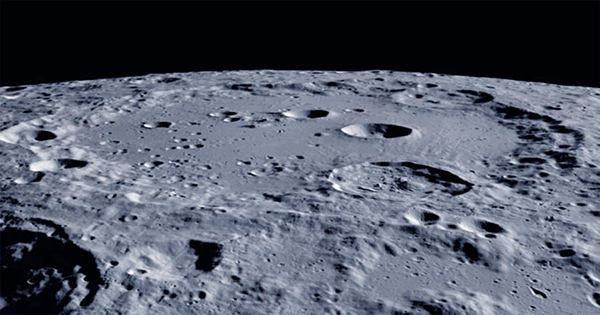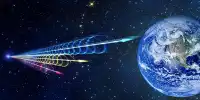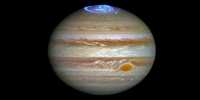It’s possible that death from the skies won’t happen just once. Instead, smaller asteroids might strike both the Earth and the Moon along with larger asteroids. The ages of the lunar glass that the Chang’e-5 mission gathered show crater clusters that coincide with the Chicxulub event as well as two other periods linked to significant terrestrial impacts.
Only a month ago, a crater off the west coast of Africa was found to be only a million years older than the Chicxulub crater. The larger counterparts to the Dimorphos/Didymos pair that NASA targeted with yesterday’s DART mission, the smaller crater’s discoverers hypothesized that the closeness in timing would indicate that the Earth was struck by a double asteroid 65 million years ago. Another possibility is that an asteroid belt disruption sent several asteroids onto simultaneous Earth-crossing courses, leading to several impacts with our planet.
Thanks to an examination of glass beads created by cosmic collisions and recovered in Change-5 samples, that scenario is starting to seem much more feasible. On Earth, these beads are uncommon because our atmosphere shields us from small asteroids and occasionally breaks up larger ones. Geological processes bury those that do form. But there are enough of them on the Moon.
Professor Alexander Nemchin of Curtin University said in a statement, “We utilized a wide range of microscopic analytical techniques, computational modeling, and geological surveys to understand how and when these minuscule glass beads from the Moon were generated. “We discovered that several of the age groups of the lunar glass beads correlate closely with the ages of some of the major terrestrial impact crater events, including the Chicxulub impact crater responsible for the dinosaur extinction event,” the study’s authors write.
By analyzing how much of the uranium in the beads has degraded into the lead, the authors were able to determine how old they were. They developed statistical models of the probabilities that each of the adjacent craters was in fact the source of the investigated beads using their sizes.
However, the authors observe that “14 of the 30 craters have model ages between 53 12 and 73 10 [million years ago], including the second largest crater,” despite the technique producing fairly broad error bars for the crater ages.
The most likely reason for this, according to Dr. Katarina Miljkovic of Curtin, is that something disturbed an asteroid in the main belt, sending it onto an orbit that crosses the Earth. It disintegrated into several fragments as a result of a circumstance like a collision with a smaller object. Small fragments from the greatest of these, which concluded the Cretaceous Period, struck the Earth and the Moon. We observe a family of related meteorites that most likely originated from the same source, so we are aware that break-ups like these do occur.
“This is an educated guess, but the chances of disrupting a lot of asteroids so that they all wind up crossing the Earth’s course is significantly smaller.”
The parent asteroid’s orbit might have been altered by “Any number of things,” Miljkovic continued.
Additionally, the authors note an increase in beads that are about 34 million years old. This occurs at the same time as the Late Eocene craters, which are made up of the 100 km (60 mi) wide Popigai crater and three other smaller locations. The greatest crater near Chang’e-5 is thought to be 479 million years old, which is the same age as the Ordovician craters on Earth, indicating that asteroids may have been shifted around both of those ages.
















